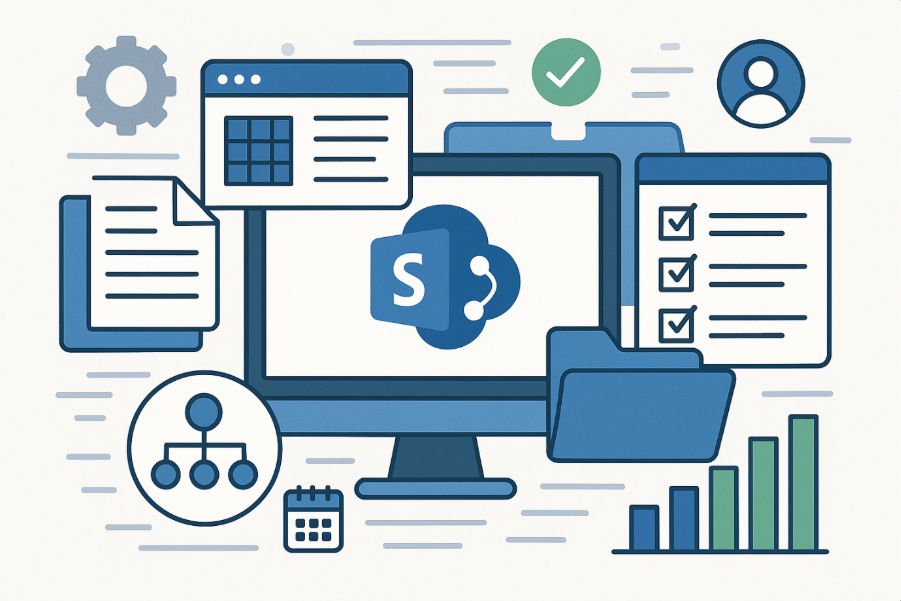Microsoft Teams and SharePoint have revolutionized workplace collaboration bringing together chat, meetings, file sharing, and content management into a unified digital experience. But with great flexibility comes great responsibility. Without proper governance, these platforms can quickly become chaotic, inefficient, and even risky.
Let’s explore what governance means in this context, and why it’s essential for long-term success.

What Is Governance?
In the context of Microsoft 365, governance refers to the policies, processes, roles, and controls that guide how platforms like Teams and SharePoint are used across an organization. It’s about ensuring consistency, security, compliance, and usability while enabling teams to collaborate effectively.
Governance isn’t just an IT concern, it’s a business imperative. It also extends beyond Microsoft 365 into the broader digital workplace, encompassing how your collaboration tools are managed. For a deeper look at this aspect, see Fresh’s guide to intranet governance, which explores how structured governance keeps your digital workplace efficient, compliant, and user-friendly.
Why Governance Is Critical
1. Preventing Sprawl
Without governance, it’s easy for Teams and SharePoint sites to multiply unchecked. Duplicate teams, abandoned sites, and overlapping content confuse users and strain IT resources. A governance framework helps manage provisioning, naming conventions, and lifecycle policies to keep your environment clean and purposeful.
2. Enhancing Security and Compliance
Governance ensures that sensitive data is protected through proper access controls, retention policies, and audit trails. It also helps meet regulatory requirements by defining how content is stored, shared, and archived.
3. Improving User Experience
When users can’t find the right team or document, productivity suffers. Clear governance improves navigation, searchability, and content relevance making collaboration intuitive and frustration-free.
4. Supporting Strategic Alignment
Governance aligns platform usage with business goals. Whether it’s enabling hybrid work, streamlining communication, or supporting digital transformation, governance ensures that Teams and SharePoint are used intentionally not just reactively.
5. Reducing IT Overhead
A well-governed environment reduces helpdesk tickets, simplifies administration, and enables automation. IT teams can focus on innovation rather than firefighting.
Key Elements of a Governance Framework
- Site and Team Provisioning: Define who can create Teams and SharePoint sites, and under what conditions.
- Naming Conventions: Standardize names for clarity and discoverability.
- Roles and Responsibilities: Assign ownership for content, permissions, and maintenance.
- Information Architecture: Structure content for easy navigation and search.
- Permissions Management: Use group-based access controls to avoid permission sprawl.
- Lifecycle Policies: Archive or delete unused sites and teams regularly.
- Training and Adoption: Educate users on best practices and platform etiquette.
The Bottom Line
Governance isn’t about locking things down, it’s about enabling collaboration with confidence. By implementing a thoughtful governance strategy for Microsoft Teams and SharePoint, organizations can reduce risk, boost productivity, and maximize their investment in Microsoft 365.
Whether you're just starting out or looking to refine your existing setup, governance is the foundation for a secure, scalable, and successful digital workplace.